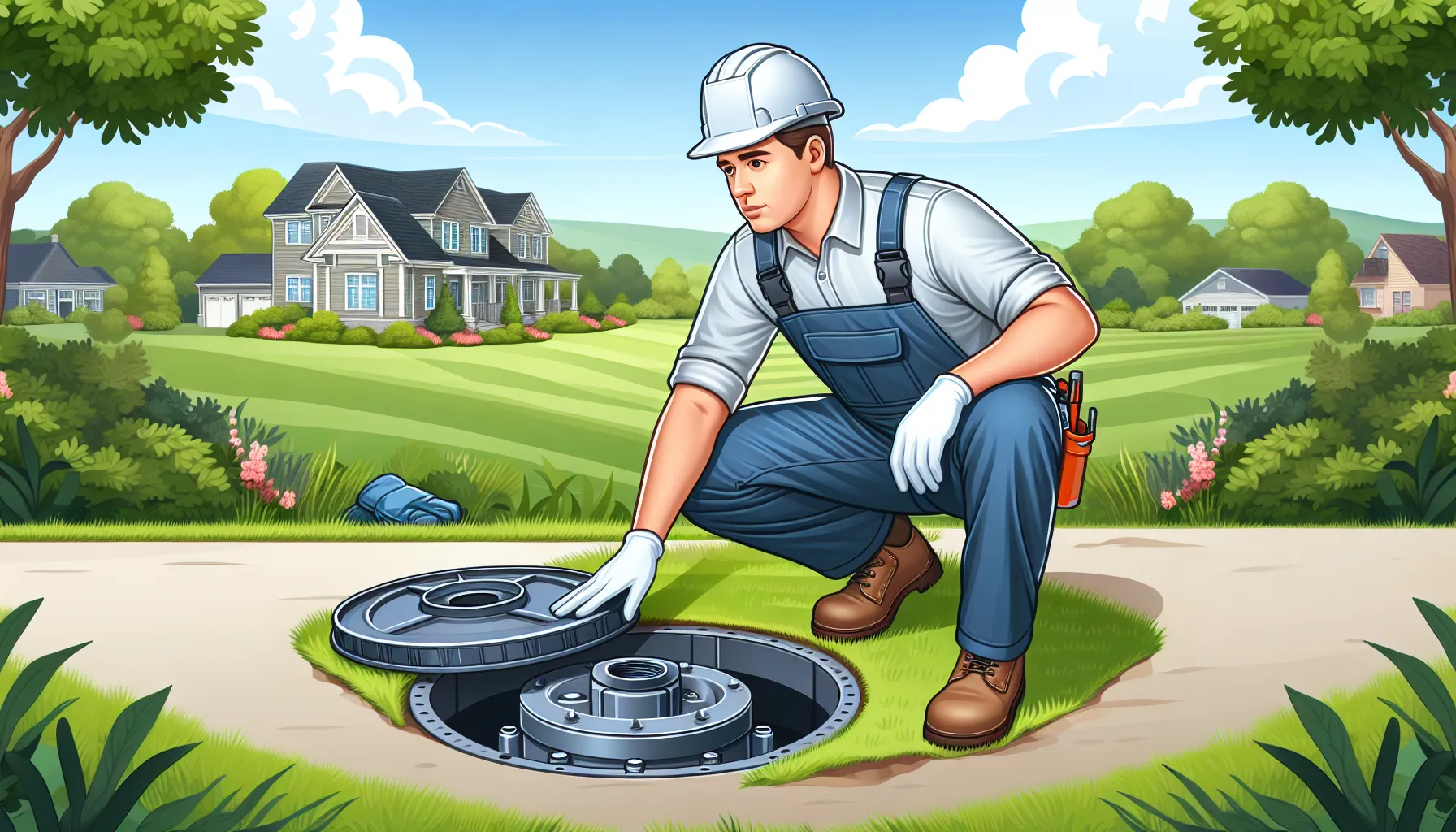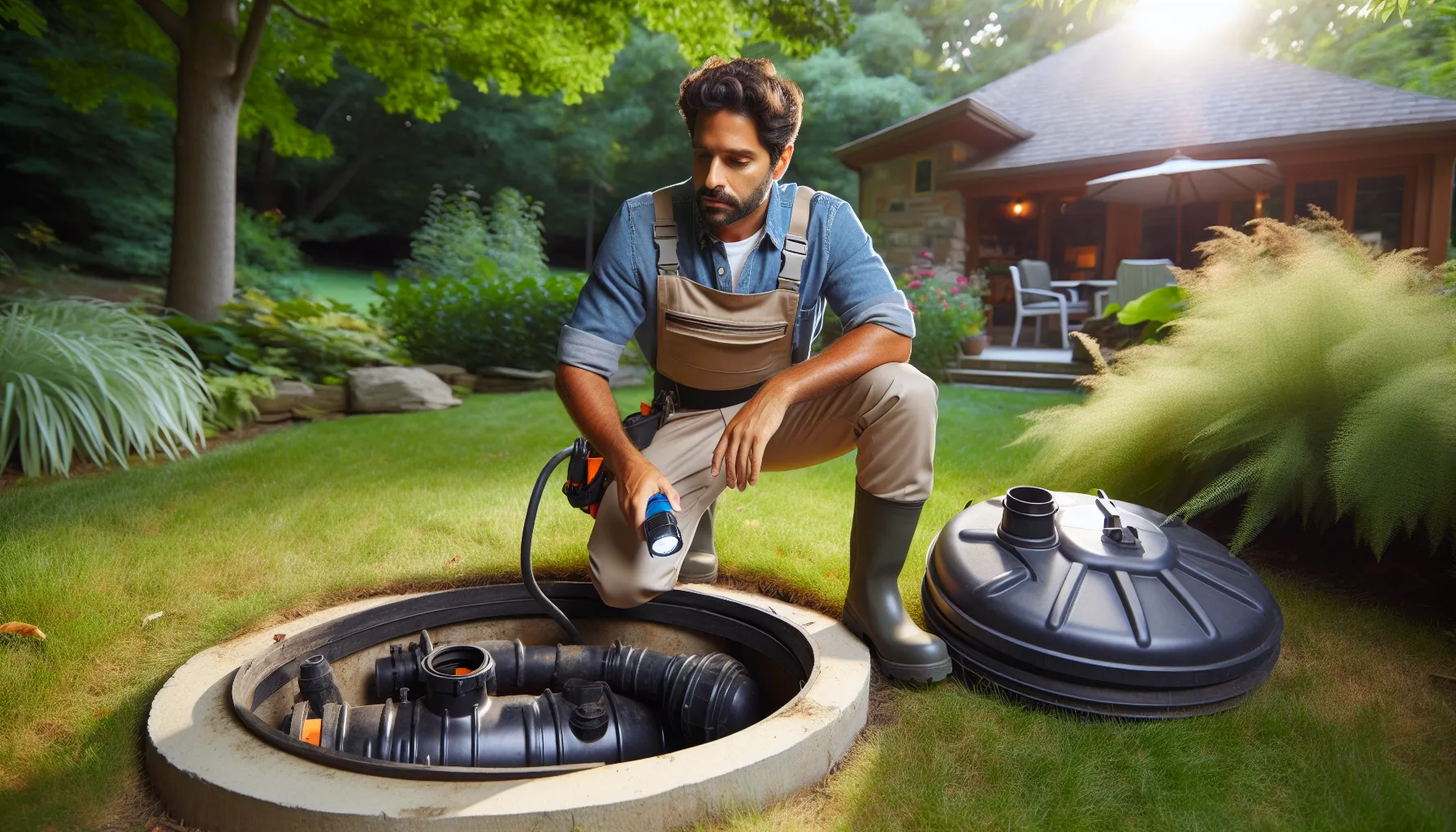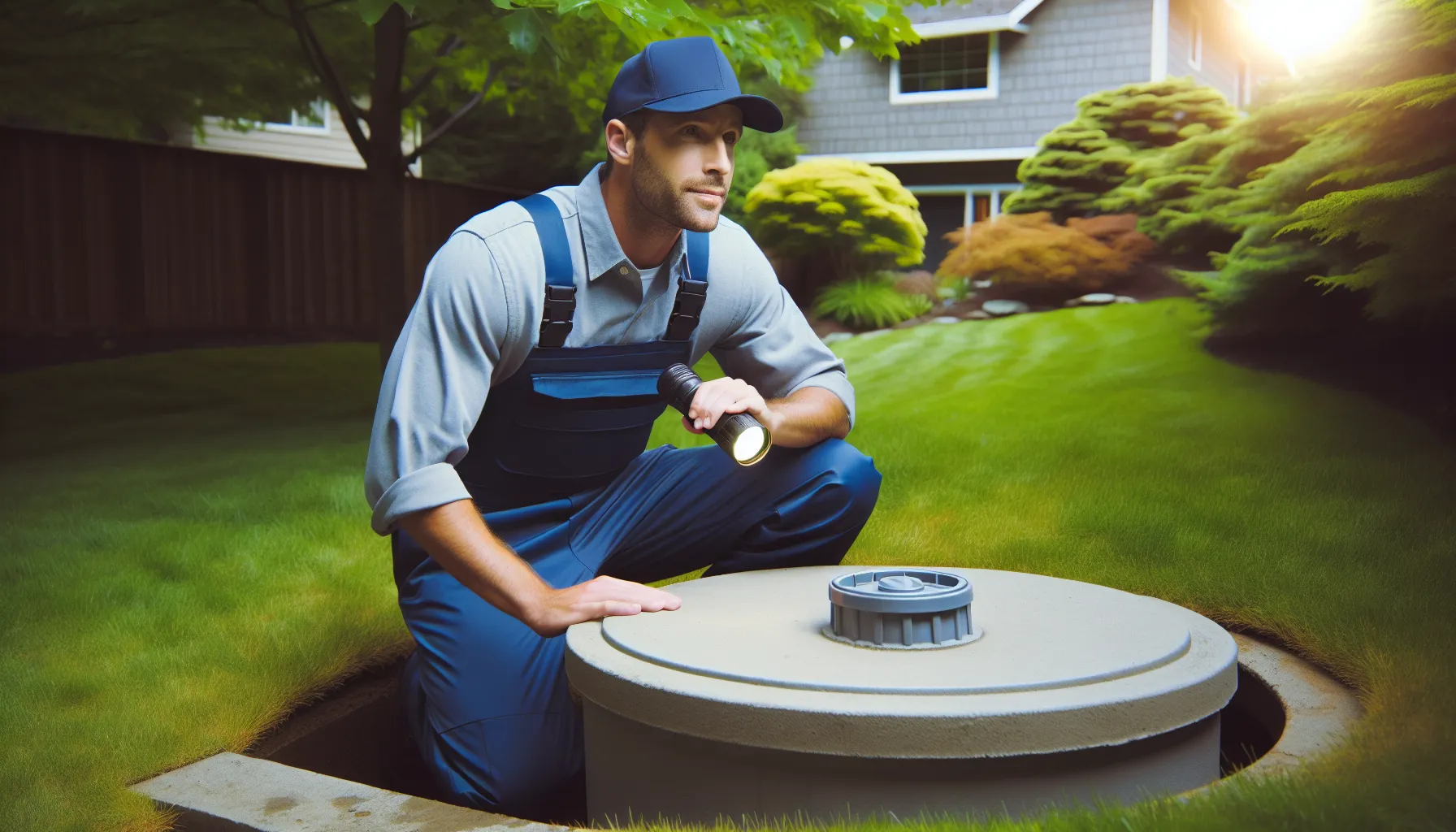Key Takeaways
- Essential Overview: A septic inspection evaluates the overall condition of a home’s septic system, covering key components like the tank, distribution box, and drain field to identify potential issues.
- Types of Inspections: The depth of a septic inspection varies by location, ranging from visual inspections to more thorough assessments, including tank pumping, ensuring compliance with local regulations.
- Critical Components Checked: Inspectors conduct visual checks for erosion, odors, and landscaping issues, along with tests for leaks and malfunctions to verify the system operates efficiently.
- Property Value Protection: Regular septic inspections help maintain property value by identifying and addressing issues early, preventing costly repairs and deterring potential buyers.
- Environmental Safety Assurance: Timely inspections prevent groundwater contamination and protect local ecosystems, ensuring both human health and wildlife safety.
- Common Inspection Findings: Typical issues found during inspections include clogs, blockages, and structural damage, underscoring the importance of regular maintenance to avoid significant operational challenges.
When it comes to maintaining our homes, we often overlook the importance of the septic system. A septic inspection is a crucial step in ensuring everything runs smoothly beneath the surface. This process involves evaluating the entire system, from the tank to the drain field, to identify any potential issues that could lead to costly repairs down the line.
Have you ever wondered what really goes into a septic inspection? Understanding this can help us make informed decisions about our property. Whether we’re buying a new home or simply taking proactive measures with our current one, knowing what to expect during an inspection can save us time and money. In this article, we’ll break down the key components of a septic inspection, so we can navigate this essential process with confidence.
Overview of Septic Inspection
Septic inspection assesses the condition and functionality of a home’s septic system. We examine essential components, including the septic tank, distribution box, and drain field. This process identifies issues that may lead to costly repairs or system failures.
During an inspection, professionals evaluate the tank for signs of damage, sludge build-up, and proper drainage. We check the main access point to ensure it’s functioning correctly. Testing the drainage area reveals potential backups or blockages, providing further insight into the system’s health.
Inspections can vary in depth based on local regulations or specific property conditions. Some jurisdictions require visual inspections, while others mandate more in-depth assessments, including pumping the tank. Regardless of the type, timely inspections help prevent more significant problems down the line.
Homeowners or potential buyers should complete an inspection prior to property transactions. Knowing the septic system’s status helps inform negotiations and ensures responsible homeownership. Understanding the inspection process builds confidence and prepares us for responsible property management.
Key Components of a Septic Inspection

A septic inspection involves several critical components that ensure the integrity and functionality of the entire system. We highlight specific aspects of the inspection process, focusing on the essential checks conducted by professionals.
Visual Inspection of the System
The visual inspection serves as the initial step in assessing the septic system’s overall condition. Inspectors examine the visible components, including the septic tank lid, distribution box, and drain field. They look for signs of erosion, pooling water, or unusual odors, which might indicate a problem. Additionally, professionals assess the landscaping around the system to ensure it’s not obstructing access or causing potential damage. Identifying issues early can prevent more costly repairs later and maintain proper functionality.
Pumping and Cleaning
Pumping and cleaning are vital aspects of maintaining the septic system’s performance. During the inspection, professionals may recommend pumping the tank if sludge levels exceed acceptable limits. Routine cleaning helps remove accumulated grease and solids, thereby reducing the chances of clogs. We understand that local regulations may dictate how often this process occurs, often every three to five years. Keeping the septic tank clean supports efficient waste breakdown and prolongs the system’s lifespan.
Testing for Leaks and Malfunctions
Testing for leaks and malfunctions is crucial to ensure that the septic system operates correctly. Inspectors use specific equipment to check for any signs of leakage in the tank, pipes, and drain field. They assess the ability of the system to handle incoming waste without backups or failures. Identifying leaks early can prevent environmental contamination and costly repairs down the line. Regular inspections help verify that the system functions efficiently, ensuring peace of mind for homeowners.
Importance of a Septic Inspection

Septic inspections play a critical role in maintaining the integrity and functionality of septic systems. They protect property value and ensure environmental safety, making them essential for homeowners. We emphasize that regular inspections reveal potential issues, preventing costly repairs and enhancing peace of mind.
Protecting Property Value
Septic inspections directly contribute to protecting property value by identifying issues before they escalate. A well-maintained septic system prevents unsightly and costly problems, such as backups or leaks, which can deter potential buyers. For instance, local real estate markets often see reduced interest in homes with unresolved septic issues, leading to lower offers or longer sale times. We recommend conducting inspections before putting a house on the market, allowing homeowners to address any repairs proactively. By prioritizing septic maintenance, we help ensure that property values reflect the care taken to uphold both function and aesthetics.
Ensuring Environmental Safety
Environmental safety hinges on the proper functioning of septic systems, making inspections vital. Faulty septic systems can contaminate groundwater and local ecosystems, posing health risks to both humans and wildlife. During an inspection, professionals assess components for leaks, checking tanks, pipes, and drain fields to mitigate these risks. For example, a failing drain field may lead to nutrient pollution in nearby water bodies, impacting local flora and fauna. By emphasizing regular inspections, we contribute to a sustainable approach, ensuring our communities remain safe and healthy for all residents.
Common Issues Found During Inspections
Septic inspections often reveal a range of common issues that can affect the functionality of a septic system. Identifying these problems early can prevent costly repairs and ensure systems operate efficiently.
Clogs and Blockages
Clogs and blockages frequently occur within septic systems, leading to significant operational challenges. Roots from trees can infiltrate the pipes, causing obstructions that hinder waste flow. Solid waste accumulations, especially in older systems, also contribute to clogs, resulting in backups. Regular inspections help detect these issues before they escalate, allowing for prompt maintenance. We recommend looking for slow drains or unusual odors, as these often signal blockage problems that warrant immediate attention.
Structural Damage
Structural damage poses another critical concern during septic inspections. Tanks can develop cracks or leaks due to age, ground movement, or lack of upkeep. These issues can compromise the integrity of the entire system, leading to failures that affect surrounding areas. Inspectors typically assess the tank wall thickness, examining for signs of corrosion or deterioration. Addressing structural damage quickly can curtail more extensive repairs and maintenance costs. A healthy septic system is pivotal for maintaining property value and ensuring environmental safety.
Conclusion
Understanding what a septic inspection entails is crucial for all homeowners. By being proactive and scheduling regular inspections we can protect our investment and ensure our septic systems function efficiently. This not only helps avoid costly repairs but also safeguards our environment and community health.
As we navigate homeownership it’s essential to prioritize septic system maintenance. Whether we’re buying a new property or managing our current home a thorough inspection can provide peace of mind and inform our decisions. Let’s commit to maintaining our septic systems for the benefit of our homes and the environment.
Frequently Asked Questions
What is a septic inspection?
A septic inspection is a thorough evaluation of a septic system, including the tank, distribution box, and drain field. Professionals assess the system for potential issues, such as damage, sludge build-up, and drainage problems, to ensure it functions properly.
Why is septic system maintenance important?
Regular septic system maintenance is crucial to prevent costly repairs and ensure safe waste management. Proper upkeep helps maintain property value, protects the environment from contamination, and promotes community health.
How often should I have my septic system inspected?
It is recommended to have your septic system inspected every three to five years. However, local regulations may vary, and some areas require more frequent inspections to prevent issues from developing.
What are common issues found during septic inspections?
Common issues include clogs from tree roots, solid waste accumulation, and structural damage such as cracks in the tank. Early detection of these problems is vital to avoid significant operational challenges.
What should I expect during a septic inspection?
During a septic inspection, professionals will conduct a visual assessment of the system, check for sludge levels, test for leaks, and evaluate the surrounding landscape for any potential damage indicators.
Can a septic inspection affect property sales?
Yes, a septic inspection can impact property sales. A thorough inspection before listing a home can reveal potential issues, enabling informed negotiations and ensuring responsible ownership for the buyer.
What is the role of pumping in septic maintenance?
Pumping is essential in septic maintenance, especially if sludge levels exceed acceptable limits. It typically needs to be done every three to five years to maintain optimal performance and system longevity.
How can I prevent septic system issues?
To prevent septic issues, practice responsible waste management, avoid flushing non-biodegradable items, ensure regular inspections, and maintain landscaping around the septic system to prevent damage.






